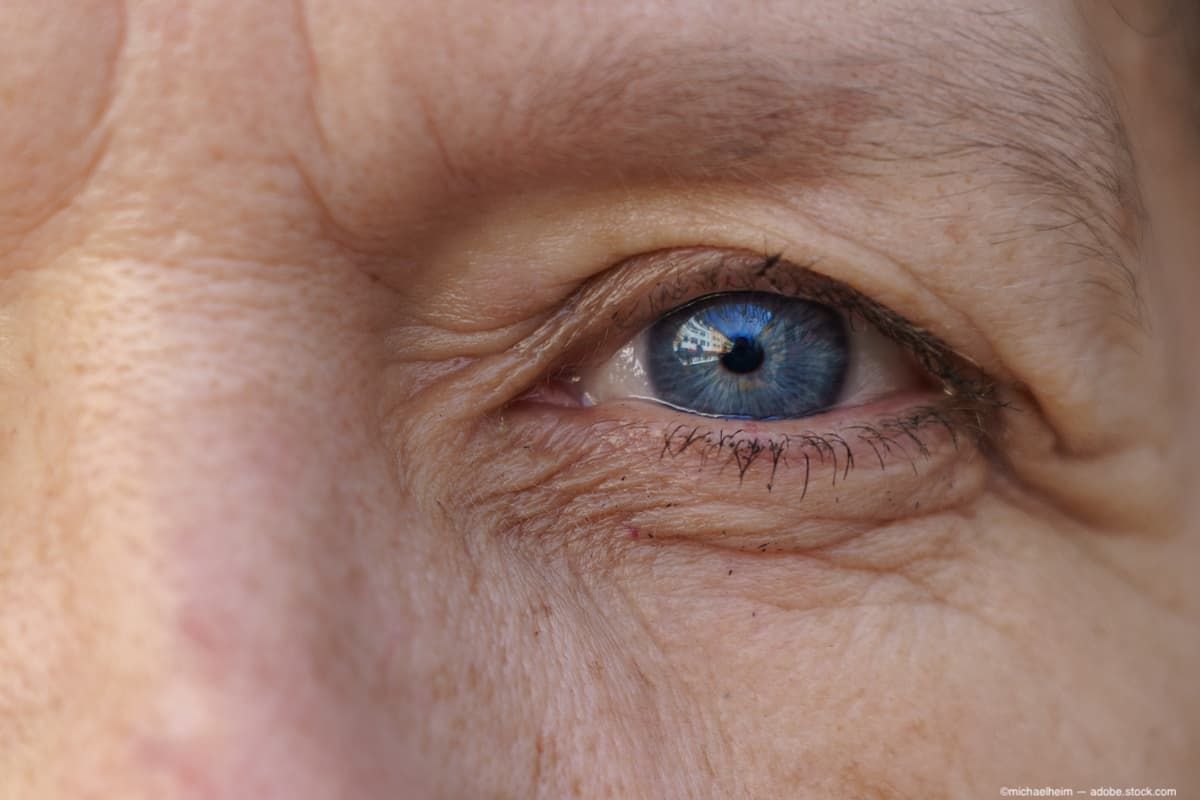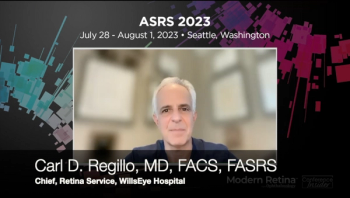
We asked, "What research at ASRS 2023 do you find exciting or interesting?" Here's what Paul Hahn, MD, Kerrie Brady, BPharm, MBA, MS, and Michael Singer, MD had to say!

Iveric Bio releases 24-month topline results from Phase 3 study of avacincaptad pegol intravitreal solution (IZERVAY) for geographic atrophy

We asked, "What research at ASRS 2023 do you find exciting or interesting?" Here's what Paul Hahn, MD, Kerrie Brady, BPharm, MBA, MS, and Michael Singer, MD had to say!

At the 2023 American Society of Retina Specialists meeting in Seattle, Washington, we asked some of the presenters, "What research here do you find exciting or interesting?" Here's what Diana Do, MD, Shawn Kavoussi, MD, and Durga Borkar, MD, MMCi had to say!

At the 2023 American Society of Retina Specialists meeting in Seattle, Washington, we asked some of the presenters, "What research here do you find exciting or interesting?" Here's what Ursula Schmidt-Erfurth, MD, Veena Raiji, MD, and Dante Pieramici, MD had to say!

According to the Keck School of Medicine of USC, the $12.4 million from the California Institute for Regenerative Medicine is the latest round of support for USC researcher Mark Humayun and a milestone in the development of a stem cell patch to treat advanced dry age-related macular degeneration.

According to the company, it is anticipating cost savings of up to $300 million through 2024, which includes an estimated 25% reduction in current workforce and a reduction in external expenses.

The company believes the 19-gauge filter needles may be the culprit in the SYFOVRE injections.

Astellas Pharma Inc. announced the European Medicines Agency (EMA) has accepted for regulatory review the marketing authorization application (MAA) for Iveric Bio’s avacincaptad pegol (ACP).

Carl Regillo, MD, FACS, FASRS, spoke with our team following the annual ASRS meeting in Seattle, Washington to share insights from his presentation titled, "Modulation of Macrophages and Complement Dysfunction in Non-exudative AMD utilizing novel, sialic-acid coated nanoparticles." Aviceda Therapeutics is unlocking the proteogenomic code of AMD to target proteins and pathways linked to macular degeneration.

According to the company, the solution slowed the loss of photoreceptors and disease progression as early as six months.

Paul Hahn, MD, PhD, shared insights on research comparing the relative efficacy of pegcetacoplan versus avacincaptad pegol in patients with geographic atrophy presented at the 2023 ASRS annual meeting.

Apellis Pharmaceuticals, Inc. presented results from the GALE extension study at the 2023 ASRS annual meeting in Seattle. The results indicated that continuous treatment with SYFOVRE (pegcetacoplan injection) for 30 months continued to show increasing beneficial effects.

Tarek Hassan, MD, spoke with our team about a novel glyco-mimetic nanoparticle, Aviceda AVD-104, being developed for the treatment of geographic atrophy.

At the 2023 ASRS annual meeting in Seattle, Washington, Ursula Schmidt-Erfurth, MD, spoke with our team to share information on the GALE extension study.

In presentations at the ASRS 41st Annual Meeting in Seattle, additional analyses support consistent protection from vision loss.

During presentations at the ASRS 41st Annual Meeting in Seattle, Apellis noted that there was no indication that drug product or manufacturing issues contributed to rare events of retinal vasculitis, and no events were reported in clinical trials.

At the 2023 ASRS meeting in Seattle, Washington, Carl Danzig, MD, caught up with our team to share the exciting results of the GATHER 1 and GATHER 2 clinical trials for avacincaptad pegol for the treatment of geographic atrophy.

The American Society of Retina Specialists is hosting its annual meeting this year in Seattle, Washington. Our team caught up with Baruch Kupperman, MD, PHD who is presenting, "Improving vision and dry AMD matching mechanism with the right patient population and stage of disease" to learn more about this topic.

The presenter, Jeffrey S. Heier, MD, Director of the Retina Service and Retina Research, Ophthalmic Consultants of Boston, and an investigator in ARCHER will deliver the data on July 30, 2023.

Belite Bio has completed patient enrollment for a trial evaluating Tinlarebant, which is the first ever treatment for Stargardt Disease.

The company plans to share the first-in-human safety data from the Phase 2/3 SIGLEC trial evaluating intravitreal AVD-104.

The American Society of Retina Specialists (ASRS) Research and Safety in Therapeutics (ReST) Committee has linked Apellis’ pegcetacoplan injection (Syfovre) with a handful of cases of occlusive retinal vasculitis.

Cognition Therapeutics has dosed the first participant in the phase 2 MAGNIFY study of CT1812. This oral therapy is being studied as a for geographic atrophy (GA) secondary to dry age-related macular edema (AMD).

Akari remains on track and plans to submit an IND application to the US FDA in the first half of 2024, and plans on starting clinical trials in the second half of 2024

Apellis has announced that seven abstracts will be presented at the American Society of Retina Specialists Annual Scientific Meeting including safety and efficacy data for the company’s pegcetacoplan injection for geographic atrophy (GA).

This trial is testing tinlarebant, a novel oral therapy which is intended to reduce the accumulation of toxins in the eye that cause STGD1 and contribute to geographic atrophy (GA).